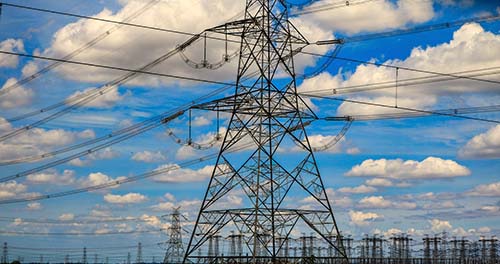Letko Brosseau
Veuillez sélectionner votre région et votre langue pour continuer :
Please select your region and language to continue:
We use cookies
Respecting your privacy is important to us. We use cookies to personalize our content and your digital experience. Their use is also useful to us for statistical and marketing purposes. Some cookies are collected with your consent. If you would like to know more about cookies, how to prevent their installation and change your browser settings, click here.
India:
a country of great promise
India is home to one of the most promising outlooks in emerging markets, both from a top-down macroeconomic perspective and a bottom-up investment approach.
Growth is poised to significantly rebound thanks to the success of India’s vaccine rollout. With more than 75% of the adult population double-vaccinated, reopening progress continues. Early 2022 economic indicators paint a promising picture. In April, the S&P Global India Services Purchasing Managers Index (PMI) recorded its ninth consecutive month of expansion. Meanwhile, the S&P Global India Manufacturing PMI, signalled a tenth month of increasing activity.
The Reserve Bank of India (RBI) remains committed to supporting the economic recovery. Key rates, such as the benchmark repo rate and the reverse repo rate, remain near record-lows. Domestic inflation dynamics are allowing the RBI to keep monetary conditions accommodative even while other emerging markets have been forced to raise interest rates significantly. At $607 billion, foreign exchange reserves are 32% higher than pre-pandemic levels. With developed market monetary tightening on the horizon, India’s enormous stockpile of international reserves bode well for the Rupee’s performance relative to peer currencies.
Longer-term, much of India’s favourable economic prospects are owed to an ambitious government-led investment initiative known as the National Infrastructure Pipeline (NIP). The USD$1.5 trillion plan, which aims to double the amount of infrastructure spending over the next five-years, emphasizes investment in long-life productivity-boosting capital assets. More than 70% of the NIP’s funds are designated for upgrading India’s energy sector, as well as its roads, railways, ports, and urban infrastructure. The plan is likely to stimulate construction, engineering, and logistics activity in the near term, while simultaneously improving India’s long-term growth potential.
India’s demographic profile further adds to this constructive outlook. With a median age under 30 and more than 700 million Indians belonging to either the millennial or generation Z cohorts, India is yet to reach peak demographics. Adding roughly 1 million people per month, India’s labour force is on track to surpass China’s in size by 2027. Meanwhile, India’s share of working-age population is rising, pushing down the ratio of the dependent population relative to the working-age population, suggesting the economy will achieve higher potential growth and income per capita in the coming years.
India is well positioned to be among the fastest growing major economies in 2022 and beyond. We see many diverse investment opportunities in India that should offer significant value creation in the medium-term. Consider the following.
Power Grid Corp of India

Power Grid is India’s largest electric power transmission company. It operates approximately 90% of India’s inter-state and inter-regional networks and transmits more than 40% of power generated in the country.
India’s per capita electricity consumption is one of the lowest in the world – at 28% of China’s and 6% of the USA’s. Power Grid Corp has grown its transmission network by about 10% every year, thereby increasing its geographic coverage and adding more capacity along its current routes.
The company has undertaken several key infrastructure projects, including the upgrading of the National Grid and the Smart Grid project to bring better connectivity across regions and facilitate efficient and intelligent transmission for better integration of renewable energy sources in the future. The government of India has an ambitious plan to increase its renewable power capacity from 87 gigawatts (GW) currently to 450GW in 2030. The “Desert Power India – 2050” vision envisages about 300 GW of renewable potential mainly through solar and wind power generation in Indian deserts.
With its strong expertise and proven track record of operational excellence, Power Grid is well positioned to benefit from India’s ambitious renewable energy strategy and increased demand for power. We forecast Power Grid to grow revenue by 5% and earnings per share (EPS) by a compound annual growth rate (CAGR) of 9% over the next 5 years The company currently trades at 10x price earnings (P/E), 7x enterprise value to earnings before interest, taxes, depreciation, and amortization (EV/EBITDA) 2023 estimated, and, a 6.4% dividend yield.
Reliance Industries
Reliance Industries is one of the largest companies in India. The company owns one of the world’s biggest and most sophisticated oil refining complex. It is also India’s largest petrochemical producer. Reliance Retail is India’s top retailer with annualized revenues approaching $25B, and the company’s mobile business, Jio, supports 421 million subscribers. Jio has built its market share from 0% in 2016 to 39% in 2020 (#1 in India) by building and providing a very high-quality 4G data network at a very competitive price point of around $2 per month per user.

Reliance has recently forayed into the fast-growing e-commerce category, partnering with international players like Meta Platforms and Google to build India’s digital payment network. E-commerce penetration in India was approximately 5% in 2020 in comparison to 15% in the US and 45% in China[1]. The e-commerce market in the country is expected to grow by a CAGR of 27% over the next five years with penetration increasing to 11% by 2025. Reliance recently launched JioMart, a food and grocery e-commerce platform allowing Indian consumers to order groceries online. Reliance will also offer back-end logistics support and customer fulfillment services to stores using this platform.
Reliance has also signed $80B in agreements with the state of Gujarat, one of the most developed states in India, to invest in building 100GW of renewable energy power plants and green hydrogen eco-system. The above investment is aimed to make Gujarat net zero and carbon free over the span of 10 to 15 years.
Consensus revenue is forecast to grow at a CAGR of 20% and EPS at a CAGR of 25% in the next four years. The company trades at a reasonable valuation of 19.8 x PE and 12.6x EV/EBITDA.
Gujarat State Petronet Limited – GSPL
The company is the second-largest natural gas transmission pipeline operator in India. Its 2,700 km network covers most of the state of Gujarat, which consumes 40% of India’s natural gas. GSPL also owns a 54% stake in Gujarat Gas, the largest natural gas distribution company in Gujarat with a 170,000 km network and 1.5 million residential, 13,000 commercial and 4,000 industrial customers. GSPL also owns 50% in a joint venture that holds 2 pipelines outside of Gujarat. India’s use of natural gas is very low at 6% of total energy compared to the global average of 24%.

India plans on increasing natural gas’s share of total energy from 6% today to 15% in 2030. GSPL will play a key role in enabling this growth. Trading at 9x P/E, 4.7x EV/EBITDA with a 0.7% dividend yield, GSPL plans on doubling its transmission network capacity over the next 5 years. Gujarat Gas plans to grow its distributed volumes by 10% annually. We project GSPL to grow its earnings at a 12% CAGR over the next 5 years, while its dividend per share could increase five-fold.
GMR Infrastructure Limited
GMR is the 2nd largest private airport operator globally and largest in India, managing 9 airport assets at various stages of development. In fiscal year 2020, it handled 103 million passengers. Delhi, Hyderabad and Cebu Airports together had a 94 million passenger capacity with another 87 million under development. Its airports handle 26% of passenger traffic in India. Regulated assets operate under a low-risk, cost plus model. The current traffic framework allows for meaningful protection to regulated revenues against disruptions like Covid-19. Runaways, buildings, baggage infrastructure, transit systems, security etc. are considered regulatory assets. Non-regulated airport services such as Duty Free, food and beverage, advertising etc. are likely to provide the company with long-term ancillary revenues due to increased passenger capacities and higher spending Indian consumers. Additionally, the company has a landbank of more than 2,500 acres around its airports being developed for commercial leasing.
The company’s core markets in South Asia and Southeast Asia are likely to see passenger traffic grow by 3 to 4 times over the next 20 years, particularly India. This growth is underpinned by rising middle class, strong GDP growth rates, and aggressive fleet expansion by low-cost carriers. The company will likely exceed its pre-Covid revenue and EBITDA run rates next year. From fiscal year 2024 to 2029 we expect the company to grow revenues, earnings and cash flows at 15%-20% CAGR.
Axis Bank
Axis bank is the third largest non-government owned bank in India. Along with its subsidiaries, it provides a full suite of financial services to its retail and commercial clients. It serves more than 27 million customers through its growing network of 4,700 branches, 11,300 ATM’s and 86,000 employees.
India is an underpenetrated banking market with a low domestic private credit to GDP ratio of 55%. While there is a steep growth path to achieve developed markets level of penetration (US similar ratio is 216%), India lags some of its emerging markets peers like China at 182%.
There is another strong tailwind for private sector owned banks like Axis bank. During the five years ending 2020, private sector owned banks have gained 15% of the market share from government owned banks. Private sector banks offer better service, are strongly capitalized, and have better underwriting capabilities than their state-owned peers, which still command 60% of market share representing significant growth opportunity.
Axis bank grew its asset base at a CAGR of 13% over last five years ending March 2021. During the same time, it grew its deposit base by 14% CAGR. While the Indian banking system has a strong growth pathway ahead due to under-penetration, Axis bank is poised to grow faster as it benefits from the underlying tailwind of market share shift. It trades at 13.5X PE and 2X price to book (PB). We expect it to grow its top line at 13% CAGR in next three years with the bottom line exceeding that growth rate in line with a more normal credit environment.
Conclusion
Thanks to progress on containing COVID-19, vaccine distribution and timely stimulus, we think that India is set to re-establish itself as a global leader for economic growth in 2022. With equally compelling top-down and bottom-up potential, we believe it will be an emerging market standout for years to come.
Source: images used under license from Shutterstock.com
[1] eMarketer Insider Intelligence, 2020 figures
Legal notes
The information about the companies mentioned herein is based on our Letko Brosseau Emerging Markets Equity Fund as of March 31, 2022, and do not represent all the securities bought and sold in the portfolios during the quarter. A list of all purchases and sales made during the past year can be provided on request.
The information and opinions expressed herein are provided for informational purposes only, are subject to change and are not intended to provide, and should not be relied upon for, accounting, legal or tax advice or investment recommendations. Any companies mentioned herein are for illustrative purposes only and are not considered to be a recommendation to buy or sell. It should not be assumed that an investment in these companies was or would be profitable. Unless otherwise indicated, information included herein is presented as of the dates indicated. While the information presented herein is believed to be accurate at the time it is prepared, Letko, Brosseau & Associates Inc. cannot give any assurance that it is accurate, complete and current at all times.
Where the information contained in this presentation has been obtained or derived from third-party sources, the information is from sources believed to be reliable, but the firm has not independently verified such information. No representation or warranty is provided in relation to the accuracy, correctness, completeness or reliability of such information. Any opinions or estimates contained herein constitute our judgment as of this date and are subject to change without notice.
Past performance is not a guarantee of future returns. All investments pose the risk of loss and there is no guarantee that any of the benefits expressed herein will be achieved or realized.
The information provided herein does not constitute investment advice and it should not be relied on as such. It should not be considered a solicitation to buy or an offer to sell a security. It does not take into account any investor’s particular investment objectives, strategies, tax status or investment horizon. There is no representation or warranty as to the current accuracy of, nor liability for, decisions based on such information.
This presentation may contain certain forward-looking statements which reflect our current expectations or forecasts of future events concerning the economy, market changes and trends. Forward-looking statements are inherently subject to, among other things, risks, uncertainties and assumptions regarding currencies, economic growth, current and expected conditions, and other factors that are believed to be appropriate in the circumstances which could cause actual events, results, performance or prospects to differ materially from those expressed in, or implied by, these forward-looking statements. Readers are cautioned not to place undue reliance on these forward-looking statements.
Concerned about your portfolio?
Subscribe to Letko Brosseau’s newsletter and other publications:
Functional|Fonctionnel Always active
Preferences
Statistics|Statistiques
Marketing|Marketing
|Nous utilisons des témoins de connexion (cookies) pour personnaliser nos contenus et votre expérience numérique. Leur usage nous est aussi utile à des fins de statistiques et de marketing. Cliquez sur les différentes catégories de cookies pour obtenir plus de détails sur chacune d’elles ou cliquez ici pour voir la liste complète.
Functional|Fonctionnel Always active
Preferences
Statistics|Statistiques
Marketing|Marketing
Start a conversation with one of our Directors, Investment Services, a Letko Brosseau Partner who is experienced at working with high net worth private clients.
Asset Alocation English
 Canada - FR
Canada - FR U.S. - EN
U.S. - EN